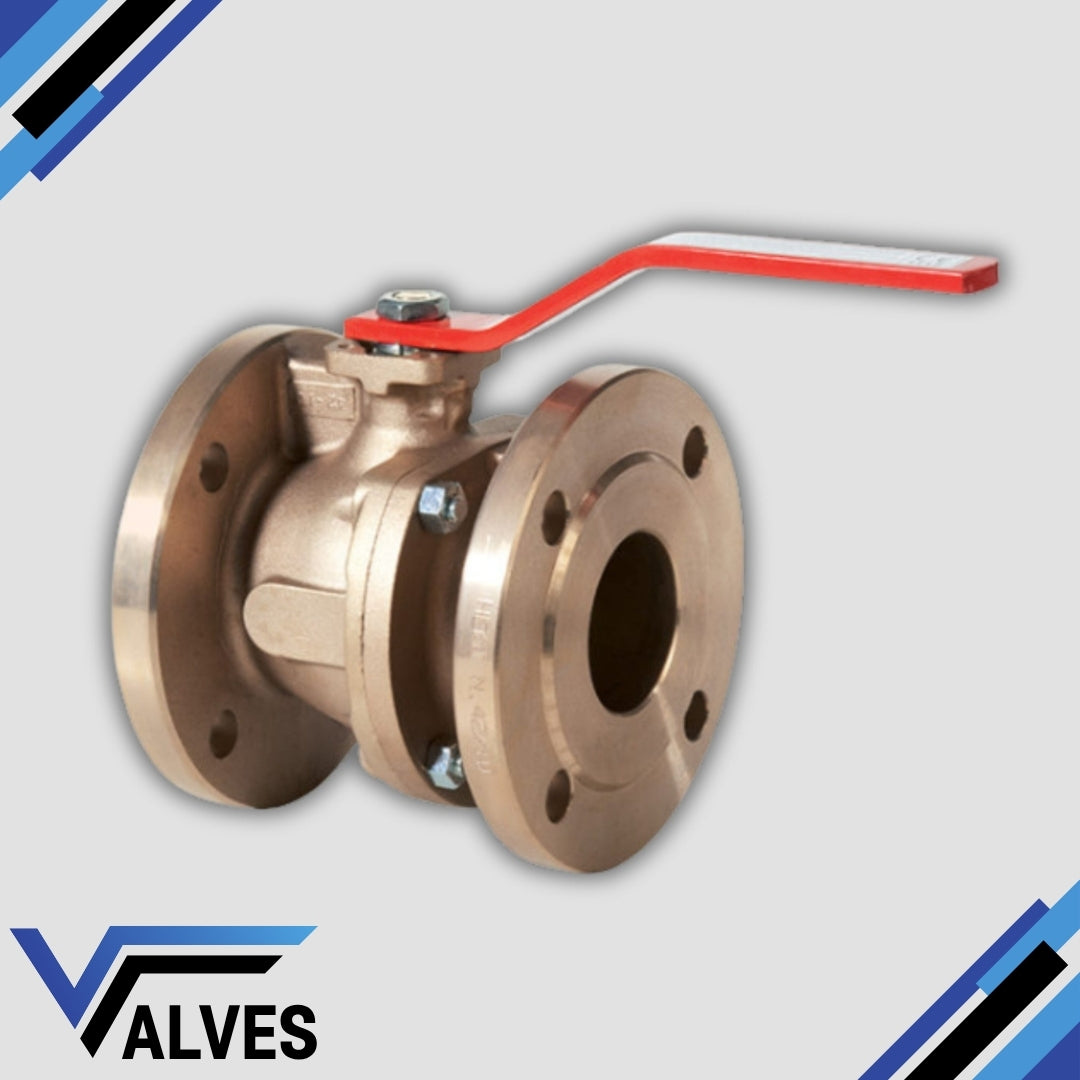Valves UK
Premium Bronze Ball Valve – Flanged ANSI 150 – ISO 5211 Mount
Premium Bronze Ball Valve – Flanged ANSI 150 – ISO 5211 Mount
Couldn't load pickup availability
The Premium Bronze Ball Valve – Flanged ANSI 150 is built to deliver uncompromising reliability, corrosion resistance, and ease of operation in demanding fluid control environments. Constructed with an ASTM B62 bronze body and 316 stainless steel ball and stem, this valve ensures long-term performance in water, oil, steam, and light chemical systems.
Featuring ANSI 150 flanged ends with ANSI face-to-face dimensions, the valve is fully ISO 5211 compliant for direct mounting of actuators—eliminating the need for additional brackets or couplings. Its full bore design minimises pressure drop, while PTFE seats and Viton stem O-rings provide superior sealing and chemical resistance. Lever operated and rated for use from -10°C to 150°C, it’s a premium solution for industrial, marine, and processing systems.
Key Features:
- Flanged ANSI 150 with ANSI face-to-face dimensions
- ISO 5211 pad for direct actuator mounting
- ASTM B62 bronze body with 316 stainless steel ball & stem
- Full bore for optimal flow and minimal pressure loss
- PTFE seats and Viton stem O-rings for enhanced sealing and resistance
- Lever operated, rated for -10°C to 150°C
- Suitable for water, oil, steam, and general industrial use
Share

FAQ's
What is the difference between a valve and an actuator?
What types of actuators are available?
The main types of actuators are:
Pneumatic actuators – use compressed air for fast, reliable operation.
Electric actuators – use electrical power for precise control.
Hydraulic actuators – use fluid pressure for high-torque applications.
Each type offers unique advantages depending on the environment, media, and system control needs.
How do I choose the right actuator for my valve?
To select the correct actuator, consider:
Valve type and torque requirement
Power source available (air, electric, or hydraulic)
Operating environment (temperature, humidity, hazardous area)
Control signal type (on/off or modulating)
Matching actuator torque and compatibility with the valve’s ISO mounting ensures reliable performance.
What are the main types of valves used in automation?
The most common valves in automated systems include:
Ball valves – for tight shutoff and quick operation.
Butterfly valves – for larger flow control with compact design.
Globe valves – for precise throttling and flow regulation.
Check valves – to prevent backflow.
Gate valves – for full bore flow isolation.
What’s the difference between a double-acting and spring-return actuator?
Double-acting actuators use air (or power) to both open and close the valve.
Spring-return actuators use air to open (or close) the valve, and a built-in spring to automatically return it to a safe position when power or air is lost — ideal for fail-safe operation.
How often should valves and actuators be serviced?
Regular maintenance intervals depend on operating conditions, but a good rule of thumb is to inspect every 6–12 months.
This includes checking for leaks, lubrication, seal wear, and actuator responsiveness to prevent unexpected downtime.

